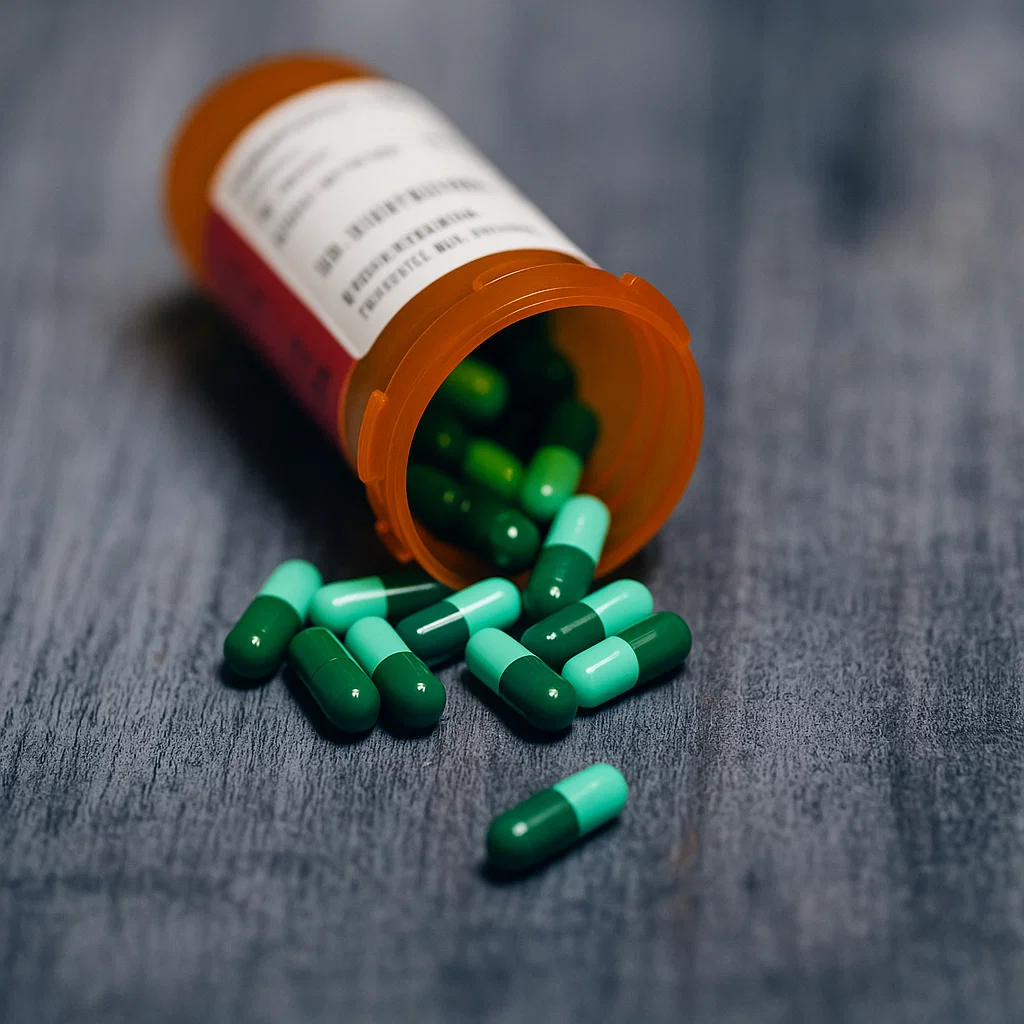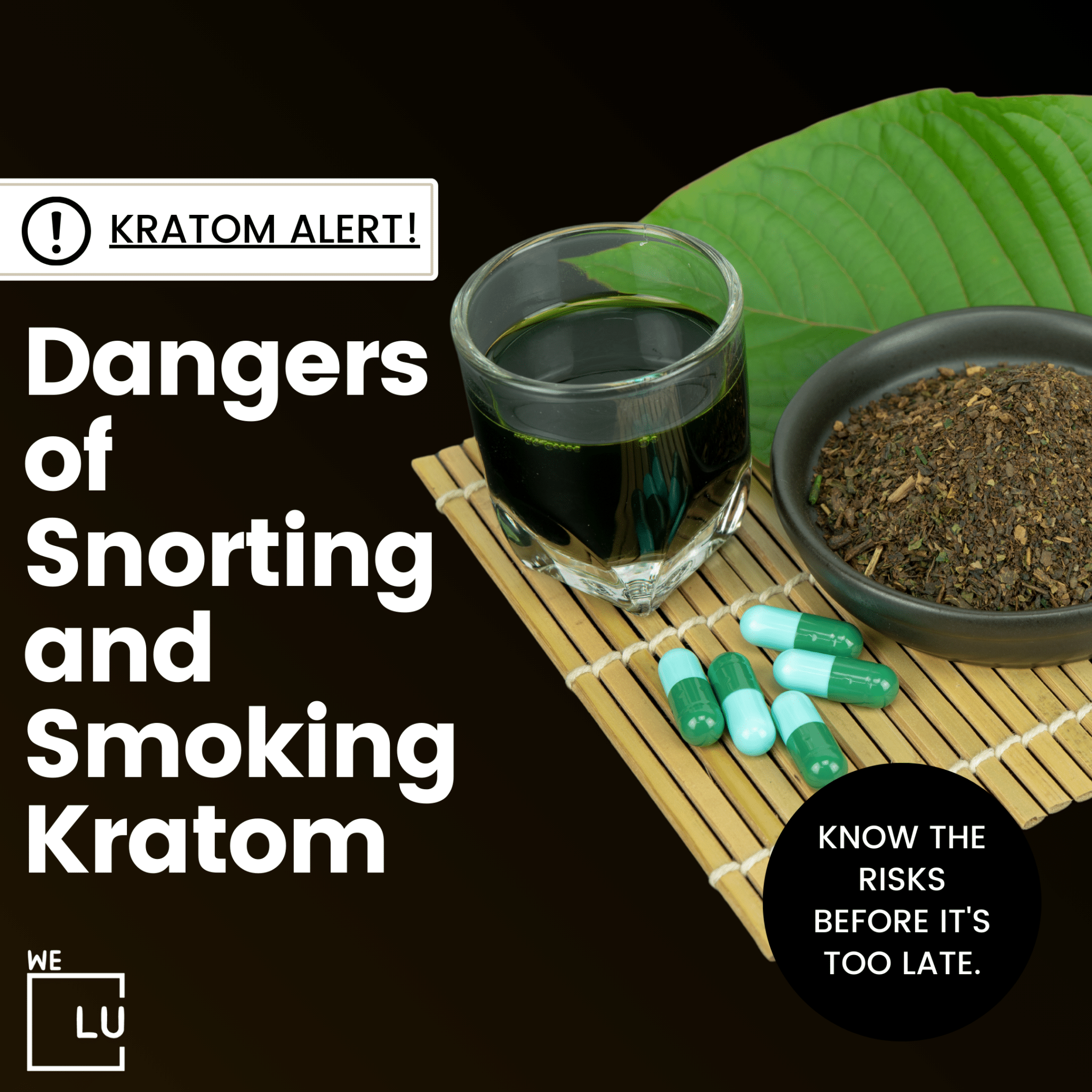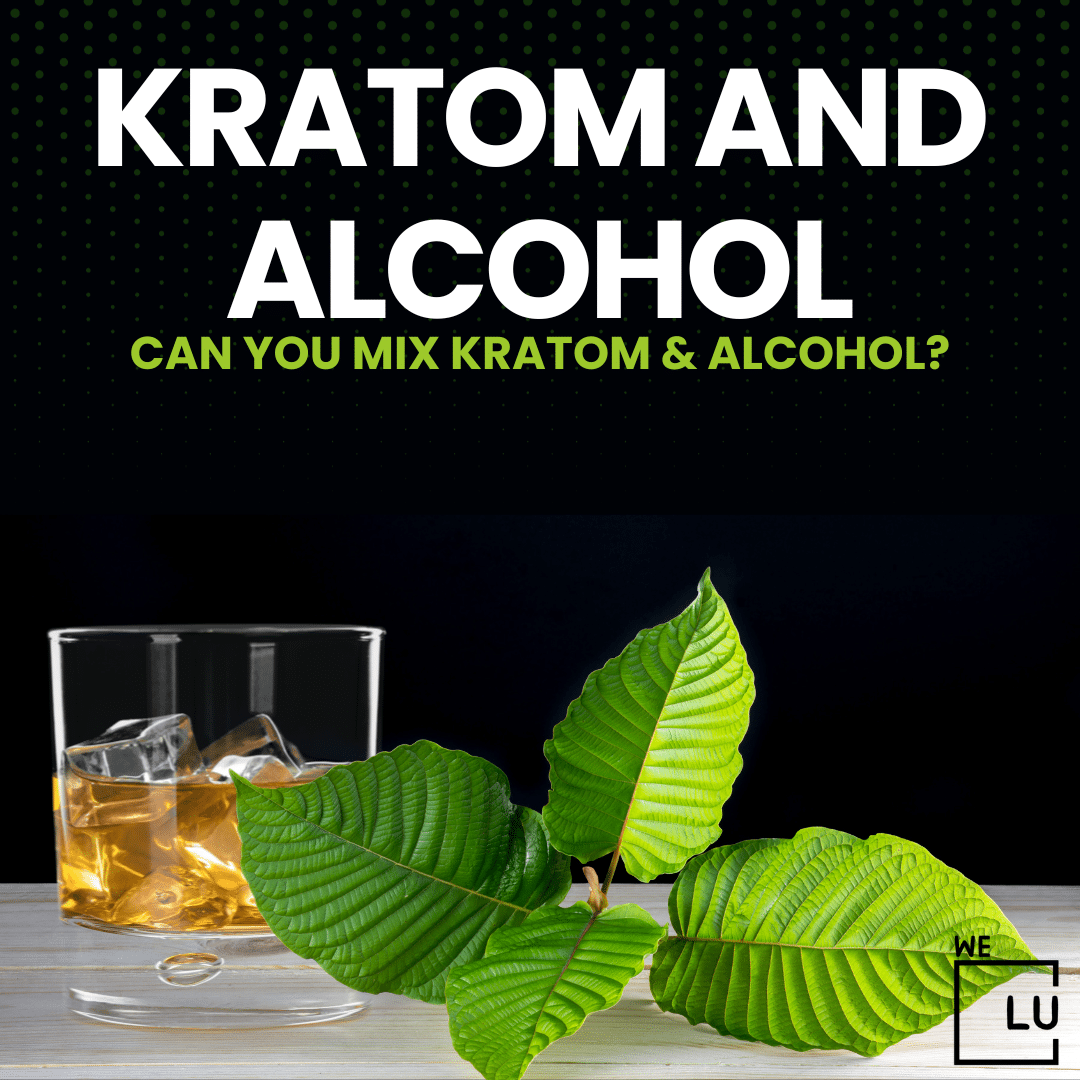What Is Tramadol?
Tramadol is a synthetic opioid analgesic used to alleviate moderate to moderately severe pain by binding to opioid receptors in the brain and spinal cord. It employs a dual action mechanism, inhibiting serotonin and norepinephrine reuptake.
Despite its effectiveness, tramadol poses risks of dependence and addiction, and it is classified as a Schedule IV controlled substance in the United States. Common side effects include dizziness, nausea, constipation, headache, and drowsiness, with more severe effects like seizures possible, especially with misuse.
Caution is advised for individuals with a history of substance abuse, seizures, or certain medical conditions. Tramadol interactions with other medications should be considered, and pregnant or breastfeeding individuals should consult their healthcare provider due to potential effects on the newborn.
Can You Get Withdrawals From Tramadol?
Withdrawal from tramadol can occur when a person has been using the medication regularly and then suddenly stops or significantly reduces their dose. The body may have adapted to the presence of tramadol, and sudden discontinuation can lead to a range of withdrawal effects. These effects result from the body readjusting to the absence of the drug and can vary in intensity depending on factors such as the duration and dosage of tramadol use.
To manage the risk of withdrawal, healthcare professionals often recommend a gradual tapering-off process, where the dose is reduced slowly over time. This approach helps to minimize the intensity and discomfort of withdrawal symptoms
How Is Tramadol Withdrawal Different From Others?
Tramadol withdrawal shares some commonalities with withdrawal from other opioids, but there are also distinct characteristics that set it apart. Here are some key differences:
- Dual Mechanism of Action: Tramadol has a unique dual mechanism of action. In addition to its opioid receptor activity, it inhibits serotonin and norepinephrine reuptake. This double action can contribute to withdrawal symptoms that may not be as pronounced in opioids without this mechanism.
- Seizure Risk: Tramadol withdrawal is associated with a risk of seizures, especially at higher doses or in individuals with a history of seizures. This is a unique aspect of tramadol withdrawal and is not a common feature in withdrawal from other opioids.
- Serotonin Syndrome Risk: Due to its effects on serotonin reuptake, abrupt discontinuation or misuse of tramadol may increase the risk of serotonin syndrome, a potentially serious condition characterized by an excess of serotonin in the body. Symptoms of serotonin syndrome include confusion, hallucinations, rapid heartbeat, fever, and muscle coordination issues.
- Less Intense Withdrawal: In general, tramadol withdrawal may be considered less intense than withdrawal from some other opioids, such as heroin or oxycodone. However, individual experiences can vary widely, and the intensity of withdrawal is influenced by factors such as the duration and dosage of tramadol use.
- Tapering Approach: Tapering off tramadol is often recommended to minimize withdrawal symptoms. This gradual reduction in dosage, conducted under medical supervision, is designed to allow the body to adjust more smoothly to the decreasing levels of the drug.
Several commonly prescribed opioids, such as oxycodone and hydrocodone, induce feelings of relaxation and can elicit a “high,” leading some individuals to use them for non-medical purposes. Tramadol, on the other hand, operates differently. It not only stimulates opioid receptors in the brain but also enhances the activity of neurotransmitters like serotonin and norepinephrine throughout the nervous system.
This unique pharmacological activity can result in two types of tramadol withdrawal: the typical opioid withdrawal syndrome and the atypical withdrawal syndrome.
Tramadol Withdrawal Symptoms
Tramadol withdrawal symptoms can vary in intensity and duration, and individuals may experience a range of physical and psychological effects when discontinuing the medication. Common tramadol withdrawal symptoms include:
- Gastrointestinal Distress: Nausea, vomiting, diarrhea, and abdominal cramps are common symptoms during tramadol withdrawal.
- Muscle Pain and Aches: Individuals may experience generalized muscle pain and discomfort.
- Insomnia: Difficulty sleeping or changes in sleep patterns can occur during withdrawal.
- Mood Changes: Tramadol withdrawal can lead to mood swings, irritability, anxiety, and, in some cases, depression.
- Flu-Like Symptoms: Some individuals may experience symptoms resembling the flu, such as runny nose, sneezing, and chills.
- Sweating: Excessive sweating, particularly at night, is a common withdrawal symptom.
- Cognitive Symptoms: Difficulty concentrating and mental fogginess are reported by some individuals.
- Increased Heart Rate and Blood Pressure: Changes in heart rate and blood pressure may occur during tramadol withdrawal.
- Pupil Dilation: Enlarged pupils can be a physical manifestation of tramadol withdrawal.
- Drug Cravings: Individuals may experience strong cravings for tramadol during withdrawal, contributing to the risk of relapse.
The severity and duration of these symptoms can vary from person to person, depending on factors such as the individual’s overall health, the duration and dosage of tramadol use, and whether a tapering-off approach is employed.

Skip To:
Learn More:
- Tramadol Vs Oxycodone, Comparison Of Side Effects & Efficacy
- Tramadol serotonin syndrome, How is it Identified, Symptoms, Risks, What to Do, Treatment & Tramadol Addiction
- Can You Snort Tramadol? Signs, Side Effects, & Treatment
- Tramadol Detox, Specifics, Statistics, Symptoms, Withdrawal, Warnings & Treatment Options
- Tramadol Interactions, Types, Risk Factors & Side Effects
Tramadol Withdrawal Timeline
The tramadol withdrawal timeline can vary from person to person based on factors such as the individual’s overall health, the duration and dosage of tramadol use, and whether a tapering-off approach is employed. However, a general timeline of tramadol withdrawal may include the following stages:
- Early Withdrawal (Days 1-3): Symptoms typically begin within the first day after discontinuation. Early withdrawal symptoms may include anxiety, restlessness, insomnia, muscle aches, and sweating.
- Peak Symptoms (Days 3-5): Withdrawal symptoms often peak during the first few days. This period may include more intense symptoms such as nausea, vomiting, diarrhea, and increased heart rate. Individuals may also experience mood swings and heightened cravings for the drug.
- Subacute Withdrawal (Days 6-14): While some symptoms may start to subside, individuals can still experience lingering effects such as fatigue, mood disturbances, and continued cravings. The intensity of symptoms varies among individuals.
- Late Withdrawal (Beyond Day 14): Many physical symptoms gradually improve after the first two weeks. However, psychological symptoms like anxiety and cravings may persist for a more extended period. It’s crucial to note that individual experiences may differ, and some people may continue to experience symptoms beyond the initial weeks.
The use of a tapering-off approach, where the dosage is gradually reduced under medical supervision, can help mitigate the intensity of withdrawal symptoms and contribute to a smoother transition. Seeking guidance from a healthcare professional is essential to create an individualized plan for tramadol withdrawal and to address any specific concerns or challenges during the process.
| Withdrawal Phase | Timeline | Common Symptoms |
|---|---|---|
| Early Symptoms | Within 12-24 hours after the last dose | Anxiety, Agitation, Restlessness, Insomnia, Sweating |
| Peak Symptoms | 2-4 days after the last dose | Nausea, Vomiting, Diarrhea, Muscle Aches, Goosebumps, Dilated Pupils, Increased Heart Rate, High Blood Pressure, Tremors |
| Late Withdrawal Symptoms | 5-7 days and beyond | Continued Insomnia, Lingering Anxiety, Fatigue, Depression, Cravings for Tramadol |
If you or someone you know is struggling with tramadol withdrawal, don’t face it alone. Contact us at We Level Up CA for guidance and support. Call us today to take the first step towards a healthier, drug-free life. Your call is free and confidential.

Get Your Life Back
Find Hope & Recovery. Get Safe Comfortable Detox, Addiction Rehab & Dual Diagnosis High-Quality Care.
Hotline (855) 695-1160
Tramadol Withdrawal Risks
Tramadol withdrawal poses certain risks and challenges that individuals should be aware of. Some of the key risks associated with tramadol withdrawal include:
- Seizures: Tramadol withdrawal has been linked to an increased risk of seizures, particularly in individuals who have taken high doses or who have a history of seizures. Abrupt discontinuation of tramadol may trigger seizures, and this risk is higher compared to other opioids.
- Serotonin Syndrome: Tramadol’s unique mechanism of action involves not only opioid receptors but also the modulation of serotonin levels. Sudden cessation or misuse of tramadol may lead to serotonin syndrome, a potentially serious condition characterized by an excess of serotonin. Symptoms may include confusion, hallucinations, rapid heartbeat, fever, and muscle coordination issues.
- Physical Discomfort: Withdrawal from tramadol can involve a range of physical symptoms, including nausea, vomiting, diarrhea, muscle aches, and sweating. The intensity and duration of these symptoms can vary among individuals.
- Psychological Effects: Tramadol withdrawal can impact mental health, leading to symptoms such as anxiety, restlessness, insomnia, mood swings, and cravings. The psychological aspects of withdrawal may contribute to the risk of relapse.
- Risk of Relapse: The discomfort associated with withdrawal, both physical and psychological, can make individuals more vulnerable to the temptation of returning to tramadol use. Without proper support and management, the risk of relapse may increase.
- Individual Variability: The response to tramadol withdrawal varies widely among individuals. Factors such as the duration and dosage of tramadol use, overall health, and the presence of any underlying medical conditions can influence the severity and duration of withdrawal symptoms.
- Dependency and Addiction: Tramadol itself carries a risk of dependency and addiction, and individuals who misuse the drug are at greater risk of experiencing withdrawal symptoms. Dependence can develop even when the medication is taken as prescribed, highlighting the importance of cautious use and close medical supervision.
Get Help. Get Better. Get Your Life Back.
Searching for an Accredited Drug and Alcohol Rehab Centers in Near You?
Even if you have failed previously and relapsed, or are in the middle of a difficult crisis, we stand ready to support you. Our trusted behavioral health specialists will not give up on you. When you feel ready or just want someone to speak to about therapy alternatives to change your life call us. Even if we cannot assist you, we will lead you to wherever you can get support. There is no obligation. Call our hotline today.
FREE Addiction Hotline – Call 24/7Tramadol Detox
Tramadol detoxification, commonly referred to as tramadol detox, is the process of allowing the body to eliminate tramadol and manage the withdrawal symptoms that may arise during this period. Detoxification is typically the first step in the treatment of tramadol dependence or addiction. Here are key aspects of tramadol detox:
- Medical Supervision: Tramadol detox should ideally be conducted under the supervision of a healthcare professional. Medical supervision is essential to monitor and manage withdrawal symptoms, especially given the risk of seizures associated with tramadol withdrawal.
- Tapering Off: A gradual tapering-off approach is often recommended to reduce the intensity of withdrawal symptoms. This involves slowly decreasing the dosage of tramadol over a specified period, allowing the body to adjust more smoothly to lower levels of the drug.
- Individualized Plans: Tramadol detox plans are individualized based on factors such as the duration and dosage of tramadol use, the presence of any co-occurring medical or mental health conditions, and the overall health of the individual.
- Medical Interventions: In some cases, medications may be used to manage specific withdrawal symptoms or to address co-occurring conditions. For example, anticonvulsant medications may be considered to reduce the risk of seizures during tramadol withdrawal.
- Supportive Care: Emotional support and counseling are crucial components of tramadol detox. Mental health professionals, counselors, or support groups can help individuals cope with the psychological aspects of withdrawal, address any underlying issues, and develop strategies for relapse prevention.
- Monitoring and Assessment: Regular monitoring of vital signs and ongoing assessment of the individual’s physical and mental health are important during the detox process. This helps healthcare providers make any necessary adjustments to the detox plan.
- Transition to Further Treatment: Detoxification alone is often not sufficient for long-term recovery. After detox, individuals may benefit from further treatment, such as counseling, behavioral therapy, and participation in support groups. The goal is to address the root causes of tramadol use and develop coping mechanisms for a drug-free life.
- Rehabilitation Programs: Inpatient or outpatient rehabilitation programs may be recommended based on the severity of dependence and individual needs. These programs offer structured environments for individuals to address the psychological and behavioral aspects of addiction.

Detox is just the initial phase of treatment, and ongoing support and therapy are essential for sustained recovery. Individuals considering tramadol detox should consult with a healthcare professional to determine the most appropriate and safe course of action based on their specific circumstances.
Comfortable Facilities & Amenities
High-Quality Addiction & Mental Health Rehabilitation Treatment
Rehab Centers TourRenowned California Addiction Center. Serene Private Facilities. Inpatient rehab programs vary.
Addiction Helpline (855) 695-1160Proven recovery success experience, backed by a Team w/ History of:
15+
Years of Unified Experience
100s
5-Star Reviews Across Our Centers
10K
Recovery Success Stories Across Our Network
- Low Patient to Therapist Ratio
- Onsite Medical Detox Center
- Comprehensive Dual-Diagnosis Treatment
- Complimentary Family & Alumni Programs
- Coaching, Recovery & Personal Development Events

Tramadol Addiction Treatment
Treatment for tramadol addiction typically involves a comprehensive approach that addresses both the physical dependence on the drug and the underlying psychological factors contributing to addiction. Here are the key components of tramadol addiction treatment:
- Medical Detoxification: The first step in treating tramadol addiction is often medical detoxification. This process involves gradually tapering off tramadol under medical supervision to manage withdrawal symptoms. Medical professionals may use medications to alleviate specific symptoms and reduce the risk of seizures during detox.
- Inpatient or Outpatient Rehabilitation: Individuals may enter an inpatient or outpatient rehabilitation program following detox. Inpatient programs provide a structured, 24/7 environment with medical and therapeutic support, while outpatient programs allow individuals to live at home while attending scheduled treatment sessions.
- Behavioral Therapy: Behavioral therapy is a crucial component of addiction treatment. Cognitive-behavioral therapy (CBT), contingency management, and motivational enhancement therapy are commonly used to address the psychological aspects of addiction, help individuals recognize and change unhealthy behaviors, and develop coping strategies.
- Individual Counseling: One-on-one sessions with a trained therapist or counselor provide a personalized approach to addressing the individual’s unique challenges, triggers, and motivations related to tramadol use.
- Group Therapy: Group therapy sessions allow individuals to connect with others facing similar challenges. Sharing experiences, receiving support, and learning from peers can be valuable in recovery.
- Family Therapy: Involving the family in the treatment process can help improve communication, address family dynamics, and provide a supportive environment for the individual in recovery.
- Dual Diagnosis Treatment: Individuals with co-occurring mental health disorders may benefit from dual diagnosis treatment, which addresses both substance use and mental health issues simultaneously.
- Relapse Prevention Education: Education on recognizing triggers, managing stress, and developing healthy coping mechanisms is essential for preventing relapse. Individuals learn strategies to navigate situations that could lead to a return to drug use.
- Aftercare and Support: Successful recovery often involves ongoing support. Aftercare programs, support groups (such as Narcotics Anonymous or SMART Recovery), and continued therapy contribute to sustained recovery and help individuals build a drug-free life.
- Holistic Approaches: Some treatment programs incorporate holistic approaches such as mindfulness, meditation, yoga, and nutrition to promote overall well-being and address various aspects of an individual’s life.
Treatment plans should be tailored to the individual’s needs, and ongoing assessment and adjustments may be necessary. It’s crucial for individuals seeking treatment for tramadol addiction to consult with healthcare professionals or addiction specialists to determine the most suitable and effective approach for their situation.
World-class, Accredited, 5-Star Reviewed, Effective Addiction & Mental Health Programs. Complete Behavioral Health Inpatient Rehab, Detox plus Co-occuring Disorders Therapy.
CALL (855) 695-1160End the Addiction Pain. End the Emotional Rollercoaster. Get Your Life Back. Start Drug, Alcohol & Dual Diagnosis Mental Health Treatment Now. Get Free No-obligation Guidance by Substance Abuse Specialists Who Understand Addiction & Mental Health Recovery & Know How to Help.
Losing My Daughter, Suicide Attempts & Homeless: Opiates Crack Addiction to Recovery & College
Experience Transformative Recovery at the We Level Up California Treatment Center.
See our authentic success stories. Get inspired. Get the help you deserve.



Start a New Life
Begin with a free call to an addiction & behavioral health treatment advisor. Learn more about our dual-diagnosis programs. The We Level Up treatment center network delivers recovery programs that vary by each treatment facility. Call to learn more.
- Personalized Care
- Caring Accountable Staff
- World-class Amenities
- Licensed & Accredited
- Renowned w/ 100s 5-Star Reviews
We’ll Call You
Search We Level Up CA Tramadol Withdrawal, Drug & Alcohol Rehab / Detox & Mental Health Topics & Resources
Sources
- Dhesi M, Maldonado KA, Maani CV. Tramadol. [Updated 2023 Apr 16]. In: StatPearls [Internet]. Treasure Island (FL): StatPearls Publishing; 2023 Jan-. Available from: https://www.ncbi.nlm.nih.gov/books/NBK537060/
- Medline Plus – Tramadol – https://medlineplus.gov/druginfo/meds/a695011.html
- Sidana A, Domun I, Arora P. Tramadol withdrawal psychosis. Indian J Psychiatry. 2019 Nov-Dec;61(6):655-656. doi: 10.4103/psychiatry.IndianJPsychiatry_11_19. PMID: 31896879; PMCID: PMC6862981. https://www.ncbi.nlm.nih.gov/pmc/articles/PMC6862981/
- Cohen B, Ruth LJ, Preuss CV. Opioid Analgesics. [Updated 2023 Apr 29]. In: StatPearls [Internet]. Treasure Island (FL): StatPearls Publishing; 2023 Jan-. Available from: https://www.ncbi.nlm.nih.gov/books/NBK459161/
- Chou R, Hartung D, Turner J, et al. Opioid Treatments for Chronic Pain [Internet]. Rockville (MD): Agency for Healthcare Research and Quality (US); 2020 Apr. (Comparative Effectiveness Review, No. 229.) Available from: https://www.ncbi.nlm.nih.gov/books/NBK556253/
- National Academies of Sciences, Engineering, and Medicine; Health and Medicine Division; Board on Health Sciences Policy; Committee on Pain Management and Regulatory Strategies to Address Prescription Opioid Abuse; Phillips JK, Ford MA, Bonnie RJ, editors. Pain Management and the Opioid Epidemic: Balancing Societal and Individual Benefits and Risks of Prescription Opioid Use. Washington (DC): National Academies Press (US); 2017 Jul 13. Available from: https://www.ncbi.nlm.nih.gov/books/NBK458660/ doi: 10.17226/24781
- Zullo AR, Danko KJ, Moyo P, et al. Prevention, Diagnosis, and Management of Opioids, Opioid Misuse, and Opioid Use Disorder in Older Adults [Internet]. Rockville (MD): Agency for Healthcare Research and Quality (US); 2020 Nov. (Technical Brief, No. 37.) Available from: https://www.ncbi.nlm.nih.gov/books/NBK564144/
- Rajabizadeh G, Kheradmand A, Nasirian M. Psychosis following Tramadol Withdrawal. Addict Health. 2009 Summer;1(1):58-61. PMID: 24494084; PMCID: PMC3905496. https://www.ncbi.nlm.nih.gov/pmc/articles/PMC3905496/
- Kleber HD. Pharmacologic treatments for opioid dependence: detoxification and maintenance options. Dialogues Clin Neurosci. 2007;9(4):455-70. doi: 10.31887/DCNS.2007.9.2/hkleber. PMID: 18286804; PMCID: PMC3202507. https://www.ncbi.nlm.nih.gov/pmc/articles/PMC3202507/
- Sansone RA, Sansone LA. Tramadol: seizures, serotonin syndrome, and coadministered antidepressants. Psychiatry (Edgmont). 2009 Apr;6(4):17-21. PMID: 19724727; PMCID: PMC2714818. https://www.ncbi.nlm.nih.gov/pmc/articles/PMC2714818/




